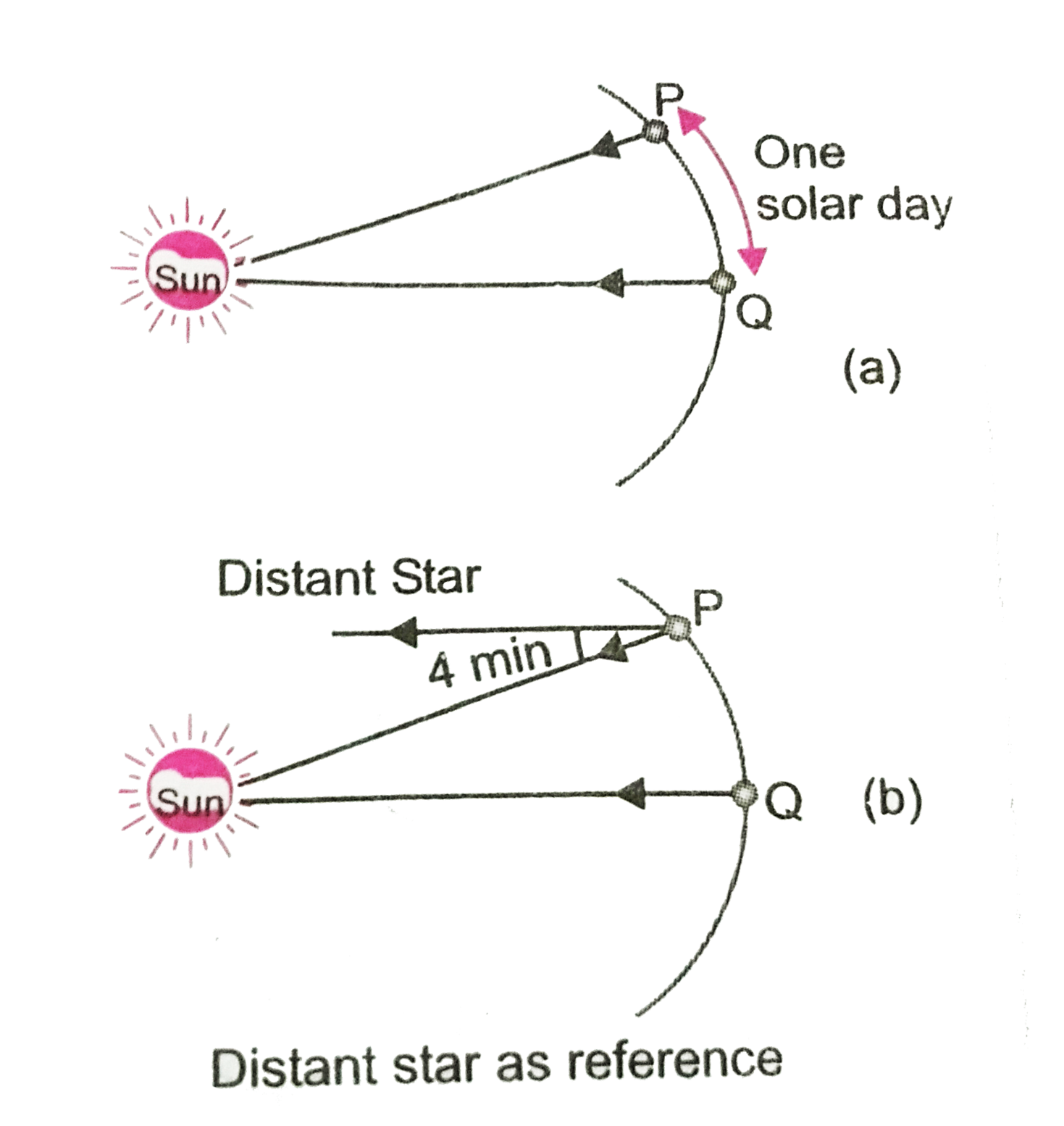The difference in the lengths of a mean solar day and a sidereal day is about
The earth's spin and orbital motion of earth around the sun is shown for one solar day and sidereal day in Fig. We know that every day the earth advances in the orbit by 1∘. Therefore, the earth will have to rotate 361∘ (which we define as 1 day) to have at the zenith point again. It means
361∘=1day=24h
∴1∘=24361×10.066h=3.99min≈4min.

Topper's Solved these Questions
- GRAVIATIONBOOK - PRADEEPCHAPTER - GRAVIATIONEXERCISE - SHORT ANSWER QUESTIONS II.
1 Videos
- GRAVIATIONBOOK - PRADEEPCHAPTER - GRAVIATIONEXERCISE - SHORT ANSWER QUESTIONS III.
1 Videos
- GRAVIATIONBOOK - PRADEEPCHAPTER - GRAVIATIONEXERCISE - SHORT ANSWER QUESTIONS I.
1 Videos
- BEHAVIOUR OF PERFECT GAS & KINETIC THEORYBOOK - PRADEEPCHAPTER - BEHAVIOUR OF PERFECT GAS & KINETIC THEORYEXERCISE - Assertion - Reason Type questions
14 Videos
- KINEMATICSBOOK - PRADEEPCHAPTER - KINEMATICSEXERCISE - 1 NCERT Comprehension
4 Videos
Similar Questions
Knowledge Check
What is the relationship between solar day and sidereal day?
ABoth are equalB'Solár day is longer than sidereal dayCSolar day is shorter than sidereal dayDThere is no relationship between the twoConsider the following statements
I.The tropical year is shorter than the sidereal year
II.The solar day is longer than the sidereal day
Which of the statements given above is/are correct?AI onlyBII onlyCBoth I and IIDNeither I nor II
Mean solar day is the time interval between two successive noon when sun passes through zenith point (meridian).
Sidereal day is the time interval between two successive transit of a distant star through the zenith point (meridian).
By drawing appropriate diagram showing the earth's spin and orbital motion, show that mean solar day is 4 min longer than the sidereal day. In other words, distant stars would rise 4 min early every successive day.
View Solution1 mean solar day is equal to how many second?
View SolutionDefine
(a) solar day
(b) Mean solar day.
View SolutionEarth's orbit is an ellipse with eccentricity 0.0167. Thus, the earth's distance from the sun and speed as it moves around the sun varies from day-to-day. This means that the length of the solar day is not constant through the year. Assume that the earth's spin axis is normal to its day. A day should be taken from noon to noon. Does this explain variation of length of the during the year ?
View SolutionEarth's orbit is an ellipse with ecentricity 0.0167. Thus earth's distance from the sun and speed as it moves around the sun varies from day to day. This means that the length of the solar day is not constant through the year. Assume that earth's spin axis is normal to its orbital plane and find out the lenght of the shortest and the longest day. A day should be taken from noon. Does this explain variation of lenght of the day during the year?
View SolutionIn a human female, the menstrual cycle is of 24 days. What will be the length of follicular phase and luteal phase if the menstrual phase is for four days?
View Solution
